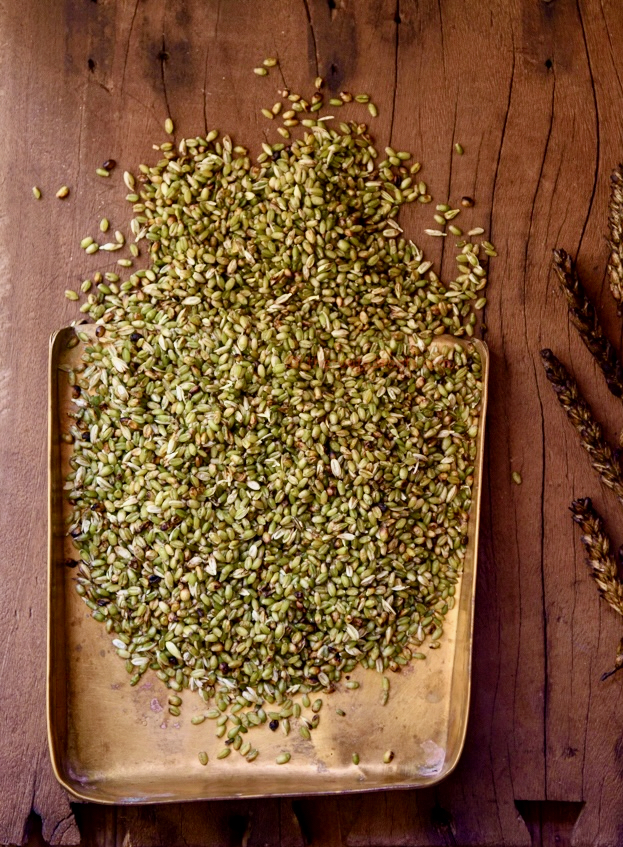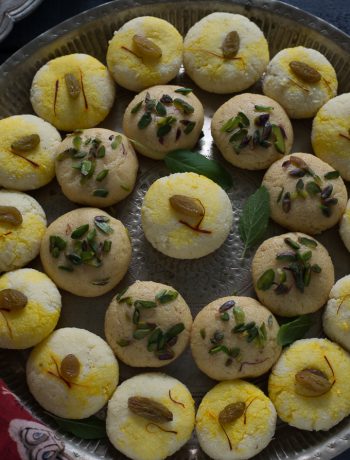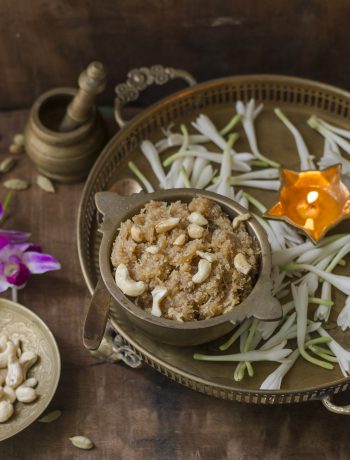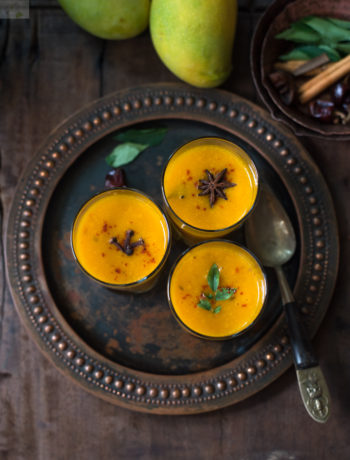Last month we bid adieu to yet another season of Ghau no Ponk. Unlike, Juwar no Ponk or Ponk as it is called in South Gujarat the Ghau no Ponk is a ‘lesser’ delicacy on Gujarat’s culinary map. Nonetheless, it is a much-celebrated treat in Bhal, an ancient wheat-growing region known for one of the finest ancient durum wheat varieties of India, the much-revered Daudkhani or Bhalia wheat.
Bhal is a flat land tucked between the current political boundaries of Ahmedabad, Bhavnagar and Anand districts. Bhal meaning forehead in Sanskrit indicates the fact that this region is as flat as our forehead. These flat plains have no stones, pebbles or gravel, simply put or as to comprehend better, my Dada explained it so to my father, “just as no hair grows on our forehead no trees or bushes grow on the flat plains of Bhal.” However, this peculiar geographical characteristic is conducive for the cultivation of a particular species of wheat popularly known as Bhalia Ghau/ Bhal Wheat. The Bhalia Ghau also known as Daudkhani/ Dodh-kani (1.5 times) ghau/long-grained wheat is unique because it grows on moisture condition of soil available after the monsoon season and is a non-irrigated variety. They are the best quality wheat in Gujarat and are known to be hardy, flavourful, tough, high in protein and pest resistant. It is an ancient wheat variety that earned a GI tag in 2011.
The mention of ancient brings me to Lothal, an important port city of Indus Valley Civilisation is situated in the Bhal region. A prominent Harappan excavated site, Lothal was a dockyard believed to have linked the region to civilisations to its west. The excavations trace the presence of wheat, barley, rice, cotton, pulses and most of these continues to be cultivated in the region. Excavations at Lothal also have imprints of rice.
Exploring more on the ancient grains I chanced upon the mention of roasted green wheat (mostly durum) called Freekeh, (a famed ancient grain native to the eastern Mediterranean and North Africa). The description of the grain sounded very similar to our Ghau no Ponk and further research confirmed both were similar. Contrary to the story behind Freekeh, it would be difficult to trace the origins of the practice of making Ghau no Ponk, but if I were to connect the dots, it could be a centuries-old tradition because Jadariyu, the most popular sweet made from the flour of this ponk has been part of our culinary tradition since ages. Also, the practice of making Jadariyu could be found only in the wheat-growing region of Bhal, signifying the access the community had to the flour made from the Ghau no Ponk.
Making Ghau no Ponk is a time-consuming process (the reason it is losing its prevalence) that requires a special skill set and a thorough understanding of the entire process. The wheat needs to be harvested when the berries are still milky (they remain so for barely for a couple of days) after which the wheat ears are fire-roasted, hand-picked while still hot, thrashed, rubbed, winnowed, and cleaned. The freshly roasted tender Ponk is enjoyed either with sugar or jaggery. To preserve the smoky flavour and its brilliant green colour, the roasted Ponk is allowed to stay within its burnt ears, to be removed and milled as and when required.






3 Comments
Arati Venkat
February 13, 2024 at 9:42 amDelighted to read about an Indian cousin of Freekeh. Where can one buy this Ghau? It’s delicious and I miss it…please guide me to getting some. Thanks
Sheetal
February 17, 2024 at 11:24 amI wonder if this Ponk is available in the market. Will share you the details if I find a farmer making and selling it.
Alpesh
February 19, 2025 at 9:54 amWe farmers from Amreli Districs ,Saurashtra region, Gujarat this time prepared Ghau no ponk (roasted green wheat) around 1000kgs , if ANY BODY NEED TO BUY KINDLY whatsapp me on 9722913685 , will arrange courier
rate would be 400/kg for Gujarat , 450/kg for rest of India including courier charges